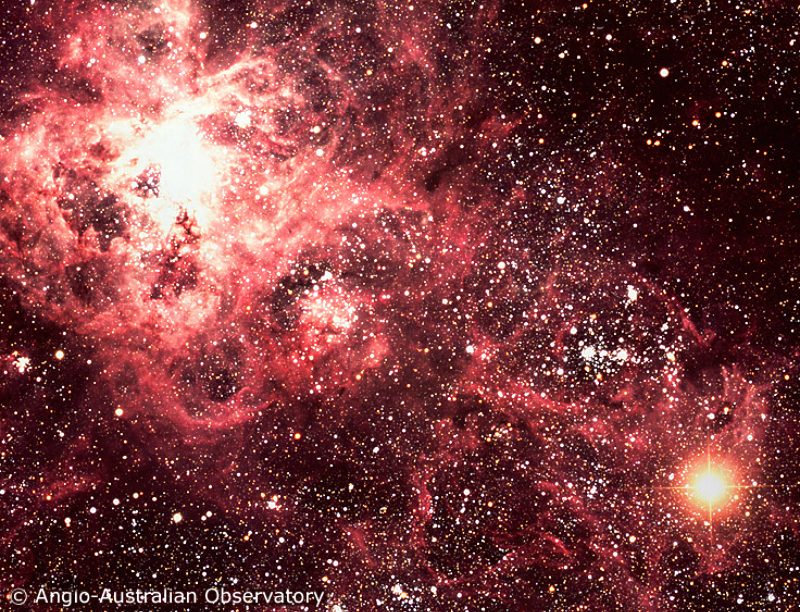

Supernova 1987A in the Tarantula Nebula
Top left is NE. Image width is
about 28 arc min
Image and text © 1987-2002, Anglo-Australian Observatory,
photograph by David Malin.
The brightest star in this picture is the first supernova to be visible to the unaided eye for almost 400 years. It occured in a region rich in young, blue stars and it was one of these which destroyed itself. When this picture was taken, about 2 weeks after the supernova was discovered, at the end of February, 1987, the expanding shell of material had already changed from blue to orange-red as it cooled. The location of the supernova in the Large Magellanic Cloud (LMC) means that it can only be seen from the southern hemisphere. This was very convenient in the early stages of the development of the supernova, since the LMC is always above the horizon of the AAT.